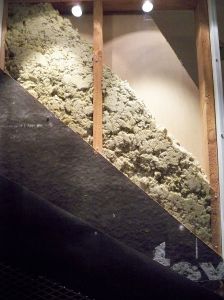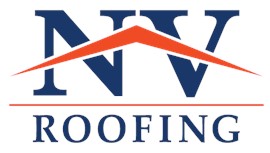 Insulation photo by Matthew G. Bisanz.Walls, Ceilings, and Floors account for 31% of home energy loss.
Insulation photo by Matthew G. Bisanz.Walls, Ceilings, and Floors account for 31% of home energy loss.
Walls, Ceilings, and Floors account for 31% of home energy loss. The reason for
floors, walls and ceiling being the BIGGEST, most significant energy drains is fairly clear: they are what make a house a house. It is inevitable that they develop
holes, gaps, cracks, and other weaknesses that lead to reduced safety, comfort, and efficiency. As with most other problems in life, there are steps you can take to deal with these weaknesses.
Sealing and insulating. But first, problem areas must be identified. One way to locate them is by scheduling a
Home Energy Audit with a company like
America's Best Energy Team. They will send an auditor to your mobile home, single home, multi-family dwelling, or townhouse to conduct a series of tests, including a
Blower Door Test, a
Combustion Analysis, and a
Thermographic Scan. Once the audit is completed, it will be clear where the most energy is being used and lost, and how air is flowing through your home. Working with the results can
benefit your health, comfort, carbon footprint, energy bills, and the value of your home. If you have already located a few of these weaknesses in your
Basement, Attic, or Crawlspace, then you can begin making your house more
energy efficient. Products such as weather strips, caulk and other sealants can be found at any home improvement store, and the instructions are straight forward: apply, then let dry.
Seal those leaks! Remember, there are two sides to every wall. Not all air leaks are so obvious as you may think, especially because they tend to develop in areas that you do not see everyday or areas that are difficult to access. Use your senses.
Energy.gov offers this helpful hint: “On a windy day, carefully hold a lit incense stick or a smoke pen next to your windows, doors, electrical boxes, plumbing fixtures, electrical outlets, ceiling fixtures, attic hatches, and other places where air may leak.” (
Detecting Air Leaks) If the smoke is pulled to one direction, you found what you were looking for.
Caution: performing this test with a candle or other open flame can be hazardous, primarily around appliances that run on or expel gas, as well as areas of the home that are used for storage or may develop gas leaks or accumulate dust. Sealing holes, cracks, and gaps is priority number one. This provides for maximum efficiency when insulation is added later. Insulation is priority number two, and it only works when it is impeding the flow of air, meaning leaks should already be sealed inside and out.
One important thing to know about insulation: it gets old and out-dated. In some homes it was never installed correctly to begin with or it gets moved around during repairs. There should be four to six inches of non-compacted or loose insulation. New materials are being developed all the time, such as shredded jeans. That's right, your old clothes can become a greener alternative to the highly processed materials that insulate most houses. Fiberglass, cellulose, rigid foam board, and spray foam are all commonly installed in homes located in moderate climates. Radiant barrier, or reflective insulation, is used to save energy in hotter climates. Asbestos is another insulator. If it's in your house, get out of there! That stuff notoriously causes cancer. What all these materials have in common though is their system of measure, identified by a numbered R value. The R stands for resistance to heat flow, and a higher value means a stronger resistance to undesirable heat gain and heat loss.
Now that you've got some knowledge under your cap, you can work towards the level of safety, comfort, and efficiency you want.
By Nick Ring.
Subscribe to NV Roofing's Blog
 Insulation photo by Matthew G. Bisanz.Walls, Ceilings, and Floors account for 31% of home energy loss.
Insulation photo by Matthew G. Bisanz.Walls, Ceilings, and Floors account for 31% of home energy loss.



